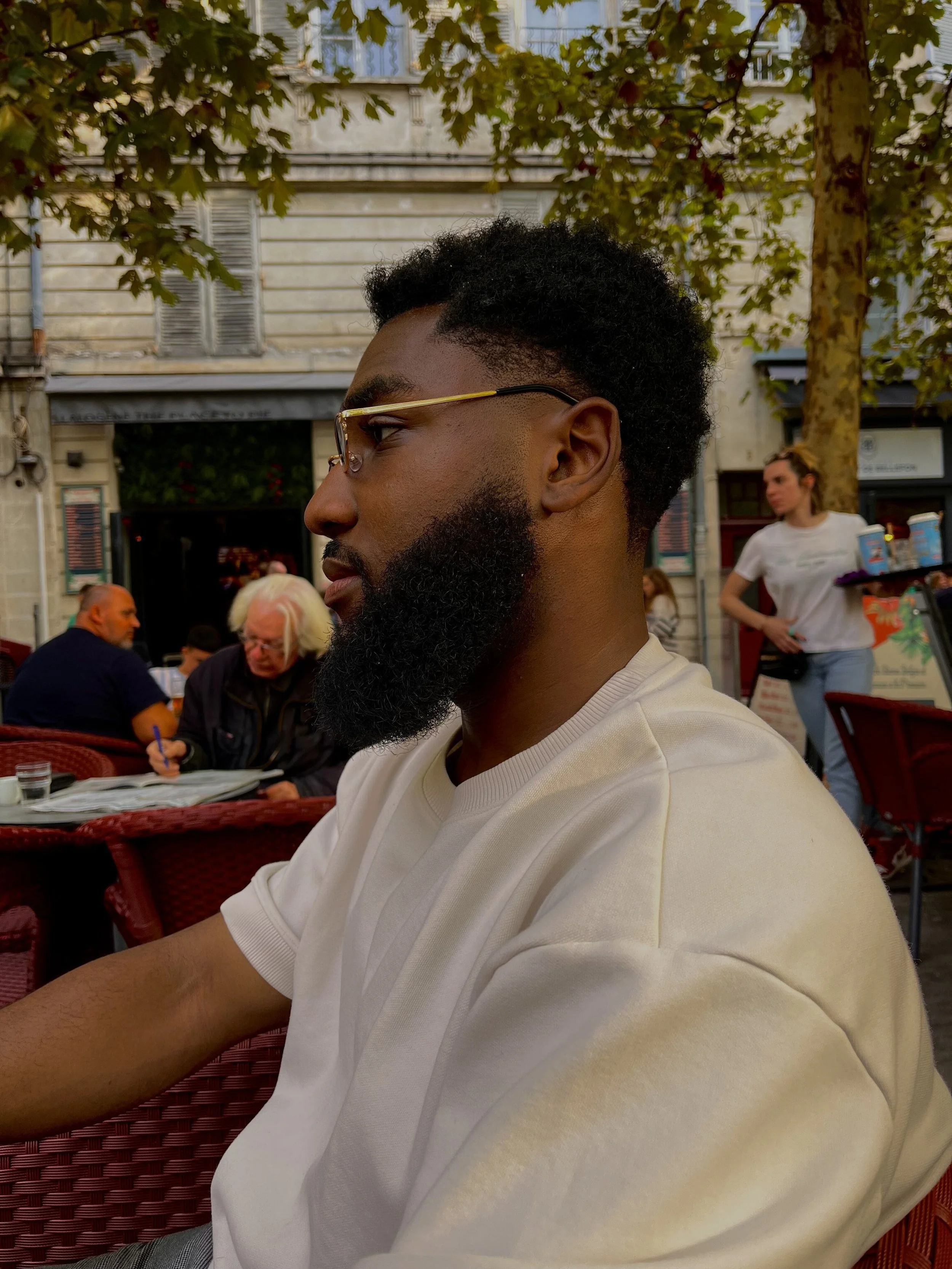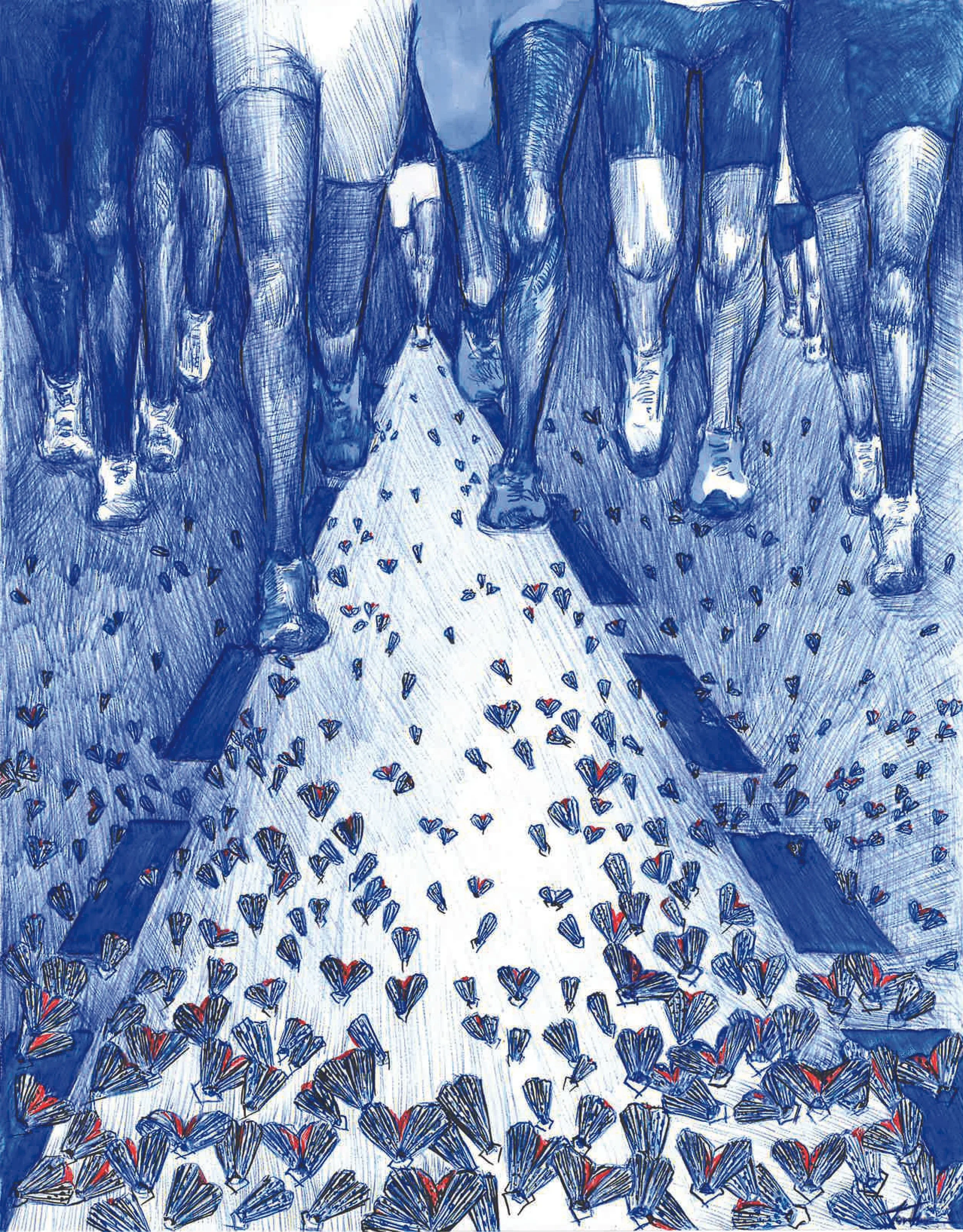10 Questions with Lee Ellis
Lee Ellis is an American contemporary artist currently based in the south of France.
He started working primarily as a chalk muralist creating large-scale works for outdoor festivals and museums. Ellis then transitioned to create a less public art practice around 2020, where he found himself drawn to smaller works. After being forced inside during Quarantine, Ellis started creating a series of works where he put hundreds of post-it notes with individual drawings onto a canvas. He has participated in multiple group shows with Curators from New York to Chongqing, China.
Lee Ellis - Portrait
ARTIST STATEMENT
Who are we without others? As individuals, we can only accomplish so much; there comes a point when we understand the importance of community. An excellent example comes from the global pandemic, where the world understood how much better we are together. Why does it take a tremendous tragedy for us to realize the significance of the collective? Within his work, Lee Ellis attempts to reinforce this ethos by giving the audience a glimpse at the overwhelming power we have together.
Le fleur de personne, Post-it notes, 100x100 cm, 2023 © Lee Ellis
INTERVIEW
Could you tell us a little more about your background and how did you begin making art?
I am an only child that thankfully, grew up with two loving parents in Twinsburg, Ohio. For the most part, my household was always quiet. One of the most calming memories I have is hearing my mom use a vacuum cleaner on the carpet at night. This tranquility gave me the freedom to explore more creative avenues. Even having an English teacher who encouraged my creativity by printing out a comic I made for other students to read. Growing up, I followed the path of expressing my artistic nature through movement closely. After a knee injury, I began to teach dance more and perform less, which led me to not truly feel fulfilled with how I could express myself. I found some relief in creating murals out of chalk; for me working with chalk required, you get dirty and personal with each piece. It wasn't until the pandemic that I found myself coming back to a material that I've used throughout my life, post-it notes.
What do you wish you knew about contemporary art before you got started?
To be honest, I'm glad I didn't know as much as I do now. Call it naivety or blissful ignorance, but this has helped me not be so worried about what I make but just to make things that resonate with me.
Most Black Kings Create A Legacy, Post-it notes, 96x96 cm, 2022 © Lee Ellis
Describe yourself in 3 words; who is Lee Ellis?
Why are these questions always so hard to answer for yourself? I would say Lee Ellis is open-minded, optimistic, and appreciative.
What is the most challenging part of your work? And where do you find inspiration?
The consistent nature of my work can be one of the most challenging and rewarding parts. Having the endurance to create hundreds of the same ideas to create something larger can become exhausting, but there's also no better feeling than when what was in your head is created. I find inspiration through other people, and I love the excitement and vigor I get from being in large cities. At times being too close to many people overstimulates me, but there's nothing better than sitting on a terrace and just watching as people go about their daily lives, "people watching," as my dad would say.
Walk us through a day in your studio. How do you work on a new piece? And how do you know a painting is finished?
I'm very fortunate because I can work anywhere and use my studio space to bring everything together on a canvas. When I have an idea for a piece, I usually test it to see if it's something that I can recreate hundreds of times. I become so jealous of artists that work on multiple pieces at once. For me, I like to finish a piece and then start on the next. With each new piece I create, I feel that I learn a bit more about what works and what doesn't. I begin to plan out each work more, knowing how many small pieces I need, what color, and in what design. This helps keep my mind focused, and it creates almost a goal to reach. I've noticed that the ideas for pieces have usually aligned with how I'm feeling at that moment which is great but also can be a hindrance because once that feeling is gone, it's difficult to create more pieces in the same manner.
Personne, Post-it notes, 100x100 cm, 2022 © Lee Ellis
What aspect of your work do you pay particular attention to?
That's an interesting question. I can't say there's something I pay particular attention to. However, the thing I pay the most attention to is how I feel while creating it. This keeps the process of making the work enjoyable, and I feel more satisfied after it's finished.
What messages do you want to convey with your art?
There was an interview with Jeff Koons where he said something along the lines of he saw the lure of the art world, and he wanted to be able to participate. Many times I've felt that I couldn't "participate" in the art world because I didn't have the "right" materials or education, but I want others to feel that they can take part in this experience. The simplicity of my materials and the repetitive nature of each work, I hope, inspire others to enjoy the little things and to continually work to achieve what they want.
22 Years A Sponge, Post-it notes, 100x100 cm, 2022 © Lee Ellis
What are you working on now, and what are your plans for the future? Anything exciting you can tell us about?
Now, I'm at an interesting point in just finishing a series of works that represent my feelings after moving overseas to be with my wife. I'm at a point in my career where I'm blessed enough to say I actually even have a career as an artist. With that, I hope to continue to produce a cohesive body of work and eventually be able to have my own solo show. I hope this interview is a step in the right direction to get my work seen by more people.
Is there anything else you would like to experiment with? Any new medium or technique you would like to incorporate into your practice?
Within my work, I've had an idea to play with form and figure by somehow incorporating dance in my work. I also would like to experiment more with collaboration, as I think some of the best forms of art come into existence when two artists come together to create a work.




















